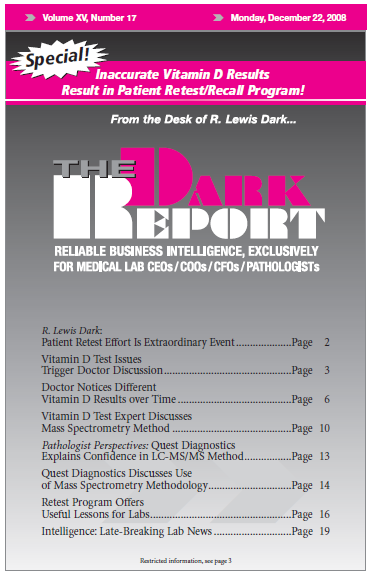CEO SUMMARY: Those labs performing Vitamin 25(OH) D testing by mass spectrometry face an interesting challenge. For more than two decades, physicians, patients, and a majority of credible clinical studies have accepted RIA and IA Vitamin 25(OH) D results as a familiar standard. That is why, to avoid confusing physicians, some labs using the mass …
Vitamin D Test Expert Discusses Mass Spec Read More »
To access this post, you must purchase The Dark Report.


